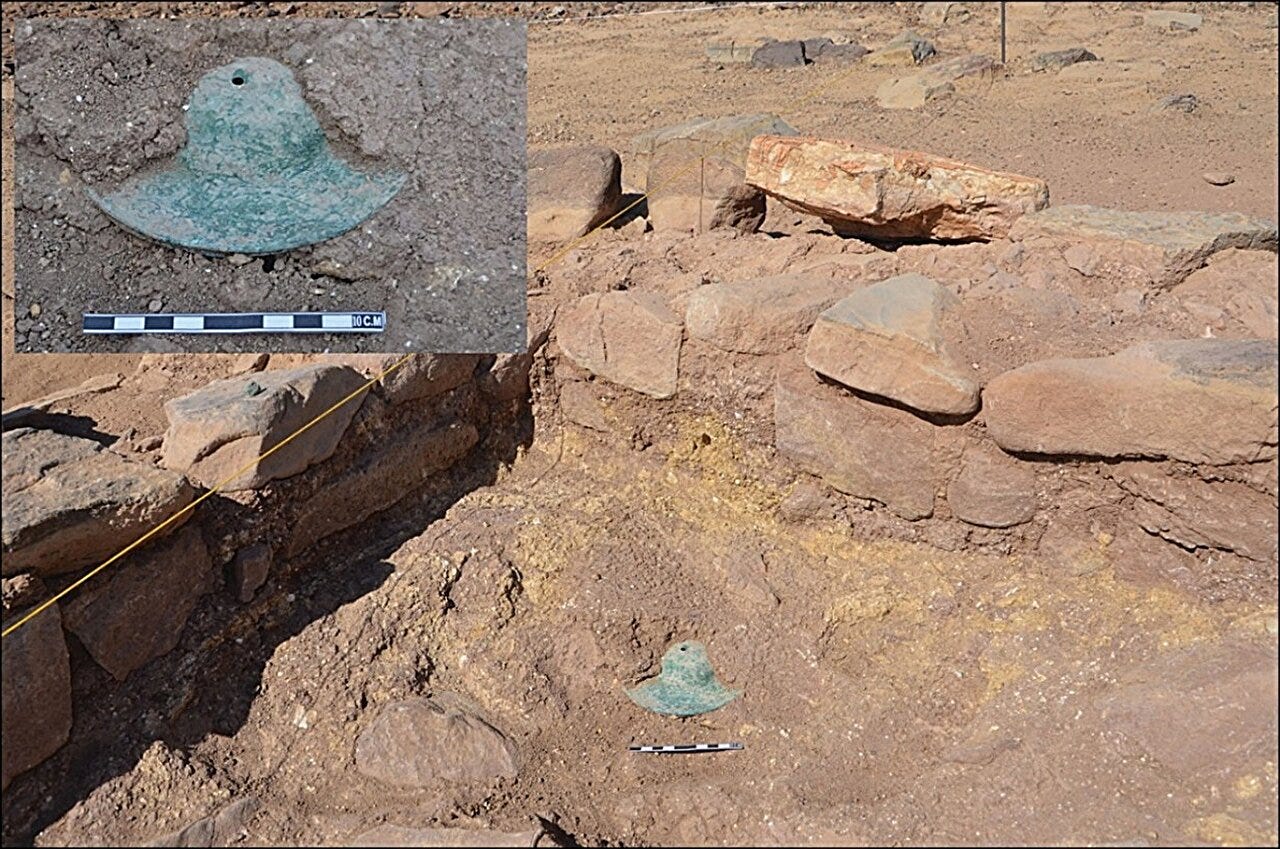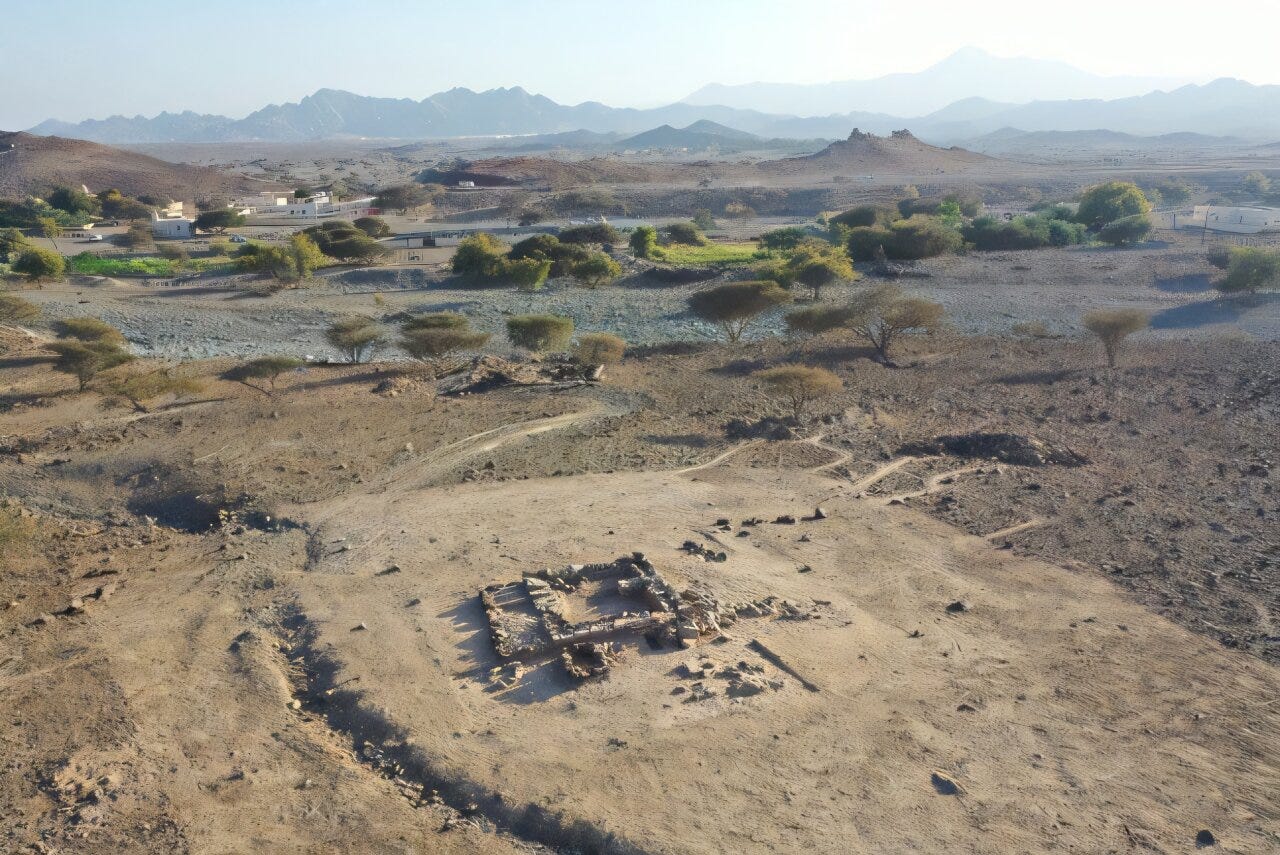In the arid expanses of Oman's Dahwa region, archaeologists have uncovered1 a pair of copper alloy cymbals dating back to the third millennium BC. These instruments, linked to the Umm an-Nar culture, provide compelling evidence of a shared musical tradition between the ancient civilizations of the Arabian Peninsula and the Indus Valley.
"These copper alloy cymbals are the first of their kind to have been found in good archaeological contexts in Oman and are from a particularly early context that questions some of the assumptions on their origin and development,"
— Professor Khaled Douglas, Sultan Qaboos University

Music has long served as a universal language, transcending geographical and cultural boundaries. Yet, the ephemeral nature of musical instruments, often crafted from perishable materials, poses challenges for archaeologists seeking to understand the sonic landscapes of ancient societies. The discovery of these well-preserved cymbals offers a rare glimpse into the auditory traditions of Bronze Age communities.
Tracing the Origins: Visual and Isotopic Analyses
A team from Sultan Qaboos University conducted comprehensive visual examinations and isotopic analyses of the cymbals' copper composition. The stylistic features of the instruments closely resemble cymbals from the contemporary Indus Valley civilization. However, isotopic signatures indicate that the metal was sourced and the cymbals were produced locally in Oman. This suggests that while the manufacturing techniques were influenced by Indus artisans, the actual production took place within the Arabian Peninsula.
"The Early Bronze Age (Umm an-Nar period) has already shown rich evidence of interregional contact," says co-author Professor Nasser Al-Jahwari. "However, the exact nature of these contacts is still a matter of study and debate."
Beyond Trade: Cultural Interactions and Musical Traditions
The Arabian Gulf during the Bronze Age was a nexus of trade, with goods such as ceramics, beads, and metals exchanged between regions. While economic aspects of these interactions are well-documented, the social and cultural dimensions remain less understood. The presence of Indus-style cymbals in Oman implies that cultural practices, including music, were shared and possibly integrated among these ancient communities.
"Discovery of the Dahwa cymbals encourages the view that already during the late third millennium BC, music, chanting, and communal dancing set the tone for mediating contact between various communities in this region for the millennia to follow," the authors conclude.
This musical connection hints at shared rituals or religious ceremonies, suggesting that music played a pivotal role in fostering and maintaining relationships between disparate cultures.
Harmonizing Histories: The Role of Music in Cultural Integration
The integration of musical traditions between the Umm an-Nar culture and the Indus Valley civilization underscores the significance of cultural exchange in ancient times. Music likely served as a unifying force, facilitating communication and understanding across linguistic and cultural divides. The Dahwa cymbals not only enrich our comprehension of Bronze Age music but also illuminate the broader tapestry of human interaction and shared expression.
Further Reading and Related Studies
Al-Jahwari, N. S., & Douglas, K. A. (2021). An Early Bronze Age Incense Burner from Dahwa (DH1), Northern al-Batinah, Oman. Near Eastern Archaeology, 84(3), 172–181. https://doi.org/10.1086/715341
Frenez, D., & Tosi, M. (2017). Bronze Age Salūt (ST1) and the Indus Civilization: Recent discoveries and new insights on regional interaction. ResearchGate. https://www.researchgate.net/publication/323548621
Al-Jahwari, N. S., et al. (2021). The Early Iron Age Metal Hoard from the Al Khawd Area (Sultan Qaboos University), Sultanate of Oman. Archaeopress Archaeology. https://www.archaeopress.com/Archaeopress/Products/9781803270821
Douglas, K. A., Al-Jahwari, N. S., de Vreeze, M., Hesein, M., Weeks, L., & Pracejus, B. (2025). Bronze Age cymbals from Dahwa: Indus musical traditions in Oman. Antiquity, 99(404), 375–391. https://doi.org/10.15184/aqy.2025.23












Share this post